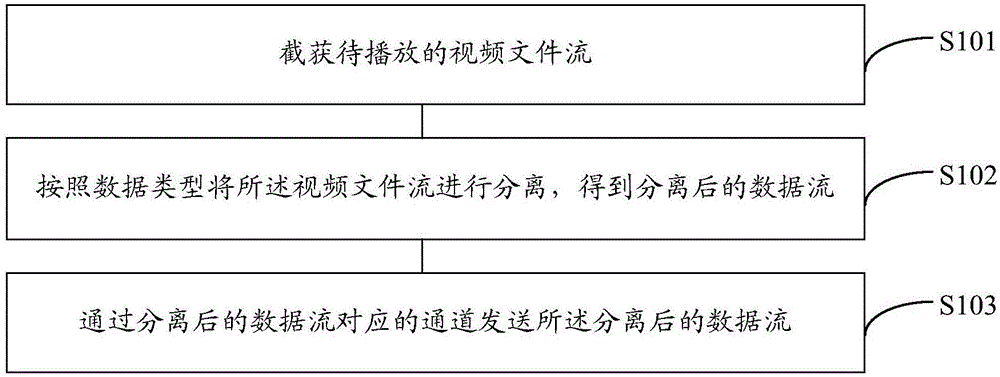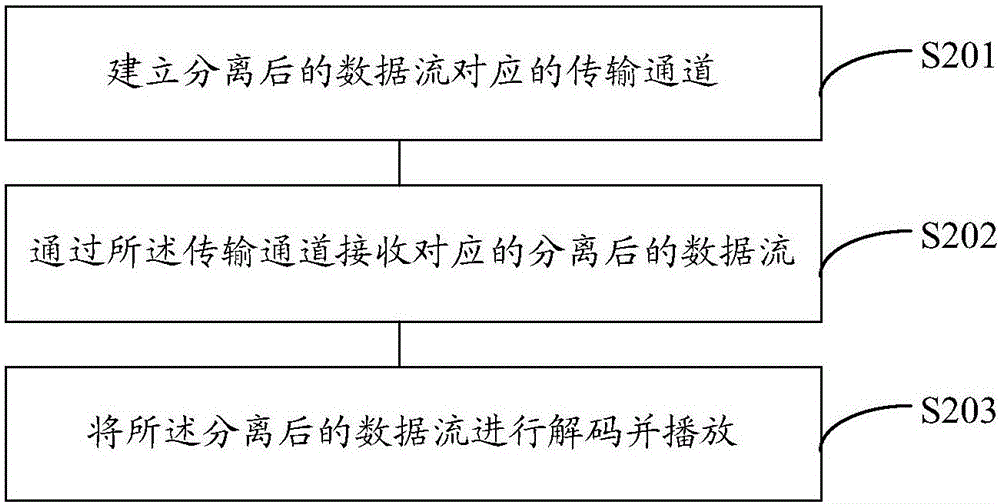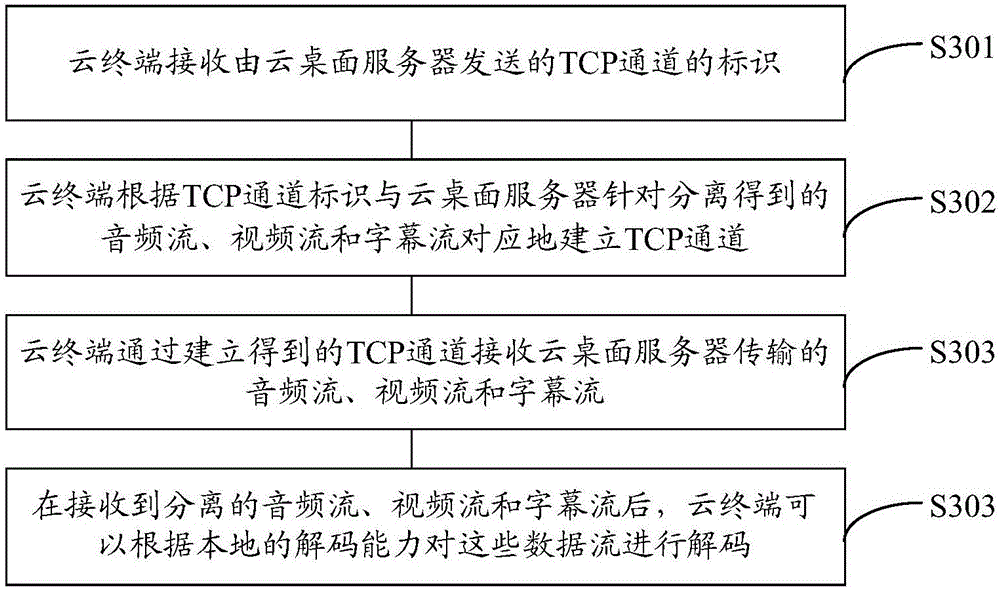Video file processing method, device and system
A technology of video files and processing methods, which is applied in transmission systems, electrical digital data processing, and input/output processes of data processing, etc., and can solve problems such as unsmooth video playback, inability to adapt to processors, and launch of cloud desktops.
- Summary
- Abstract
- Description
- Claims
- Application Information
AI Technical Summary
Problems solved by technology
Method used
Image
Examples
Embodiment 1
[0087] see figure 1 , which shows a video file processing method provided by an embodiment of the present invention, which can be applied to a cloud desktop server; the method can include:
[0088] S101: Intercepting the video file stream to be played;
[0089] S102: Separate the video file stream according to the data type to obtain the separated data stream;
[0090] S103: Send the separated data stream through a channel corresponding to the separated data stream;
[0091] for figure 1 In the technical solution shown, it should be noted that after the cloud desktop server intercepts the video file stream, it does not decode the video file stream, but only separates it according to the data type, and sends the separated data stream to Cloud terminal, so that the cloud terminal can decode and play the separated data stream according to the local hardware decoding capability, reduce the operating pressure of the cloud desktop server and reduce the traffic between the cloud t...
Embodiment 2
[0111] Based on the same technical idea of the foregoing embodiments, see figure 2 , which shows a video file processing method provided by an embodiment of the present invention, the method is applied to a cloud terminal, and the method may include:
[0112] S201: Establish a transmission channel corresponding to the separated data stream;
[0113] S202: Receive the corresponding separated data stream through the transmission channel;
[0114] S203: Decode and play the separated data stream.
[0115] It should be noted that the separated data stream may include an audio stream, a video stream, and a subtitle stream; therefore, correspondingly, the establishment of the transmission channel corresponding to the separated data stream specifically includes:
[0116] A transmission channel for transmitting the audio stream, the video stream, and the subtitle stream is established.
[0117] It should be noted that, see image 3 , the specific implementation process of the ab...
Embodiment 3
[0135] Based on the same technical idea of the foregoing embodiments, see Figure 4 , which shows a detailed flow of a video file processing method provided by an embodiment of the present invention; the flow is applied to such as Figure 5 As shown in the cloud desktop system, the cloud desktop system includes: a cloud desktop server and a cloud terminal; the method may include:
[0136] S401: The cloud terminal initiates a TCP connection establishment request to the cloud desktop server;
[0137] Understandably, a client corresponding to the cloud desktop server may be installed in the cloud terminal, so as to interact with the cloud desktop server through the client, which is not specifically limited in this embodiment.
[0138] S402: The cloud desktop server feeds back a request response to the cloud terminal;
[0139] S403: The cloud terminal obtains the main window of the current desktop protocol;
[0140] After obtaining the main window of the current interface of ...
PUM
 Login to View More
Login to View More Abstract
Description
Claims
Application Information
 Login to View More
Login to View More - R&D
- Intellectual Property
- Life Sciences
- Materials
- Tech Scout
- Unparalleled Data Quality
- Higher Quality Content
- 60% Fewer Hallucinations
Browse by: Latest US Patents, China's latest patents, Technical Efficacy Thesaurus, Application Domain, Technology Topic, Popular Technical Reports.
© 2025 PatSnap. All rights reserved.Legal|Privacy policy|Modern Slavery Act Transparency Statement|Sitemap|About US| Contact US: help@patsnap.com



